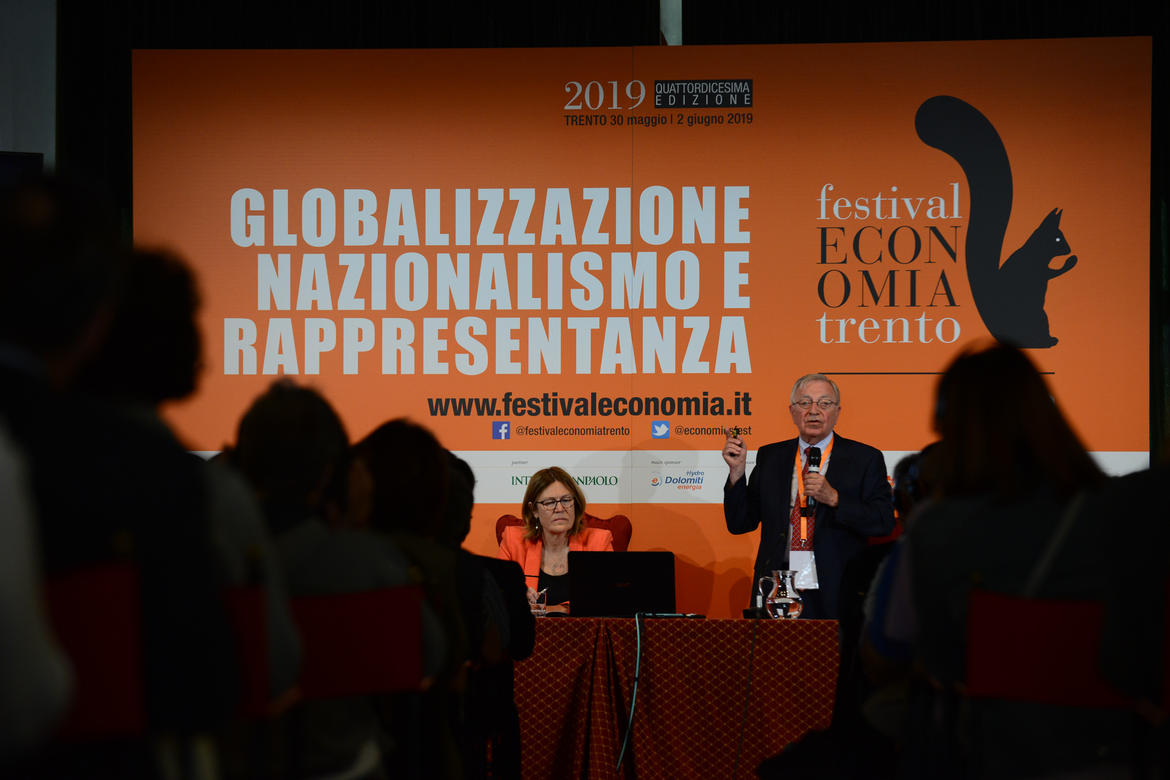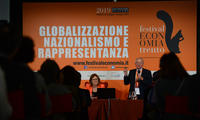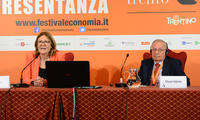
Elhanan Helpman discussed globalization and inequality from a global perspective on the third day of the Trento Economics Festival. His presentation was based on his book titled, “Globalization and Inequality” which examines the impact of globalization in localized communities, particularly the United States and Brazil.
Helpman began by providing a historical background on the subject. He states that there were two waves of globalization. These waves of globalization led to rising inequalities and a rising gap in income per capita between rich and poor countries. In terms of poverty, in 1981, there were approximately 2 billion people who lived in extreme poverty. This number has declined even though the population has grown. Helpman then asked the question, “was the decline in poverty possible without globalization?” In order to answer this question, he looked at many different channels. The first one Helpman discussed was the tremendous rise in the college wage premium in the 1970s. In particular, he looked at the labor supply for college graduates. Over time, more and more graduates joined the labor force.
Some possible explanations for this were, the decline of unionization, deregulation of labor, product and financial markets and a decline in the minimum wage; the introduction of trade integration of less developed countries to the world’s trading system and technology skills biased technology change. Helpman introduced quantitative studies to support this claim which concluded that trade can explain only a fraction, about 20-25% of the rise in the college wage premium.
Helpman expanded upon the idea that sectors with faster increases in demand for non-production workers were more innovative and more intense in computer use. His response to this idea was broken down into five parts: assortative matching, regional disparity, firm heterogeneity, technology choice and labor market frictions. In sorting and matching, Helpman used a section from his own research to help explain the concept. It read, “Due to complementarities, improved matches of workers with sectors managers or technologies raise wage inequalities.” He said that this helps explain changes in inequality between sectors, with sectors and different segments of the distribution inequality correlation between inputs.
Moving on to the topic of China, Helpman asked, “How has competitiveness in China affected wages?” He says that the largest effects were found in those with advanced degrees, while those with lower degrees were not as significantly affected. He began to analyze the “China shock” to explain regional disparity in the United States. The “China shock” affected specific regions of the United States, most notable, the commuting zones. The shock impacted wages in sectors that do not compete directly with imports from China. Helpman stated there were no significant effects on population levels but there was substantially lower labor force participation in the more-affected commuting zones. He mentioned that the “China shock:” had a small impact on Germany, in fact the integration of the Central and Eastern European countries into the world economy had more of an impact on Germany than the shock did.
Helpman then discussed firm heterogeneity. He explained that only small fraction of firm’s export, exporters are bigger and more productive than non-exporters, larger firms pay higher wages and exporters pay higher wages. Trade liberalization leads to selection of more productive firms into exporting and raising relative demand for skilled workers. Helpman revealed that half of wage inequality can be explained by residual wage inequality.
At the end, Helpman made some conclusions to summarize his findings and solidify his argument. He said, trade affects earnings inequality through multiple channels; trade contributes to residual inequality as well as to inequality based on worker characteristics; approaches that focus on earnings of broad labor categories such as skilled and unskilled labor or production and non-production workers are too simple for the rich patterns in the data; heterogeneity of inputs and firms sets in motion novel channels through which foreign trade impacts wage inequality; while the novel mechanisms find support in the data, they better explain the link between trade and inequality, their quantitative impact is not overwhelming and based on available evidence, foreign trade does not appear to be the driver of inequality.
Watch the video with Elhanan Helpman here
Website: https://2019.festivaleconomia.eu/home
Twitter: https://twitter.com/economicsfest
Facebook: http://www.facebook.com/festivaleconomiatrento
Instagram: https://www.instagram.com/festivaleconomia/










